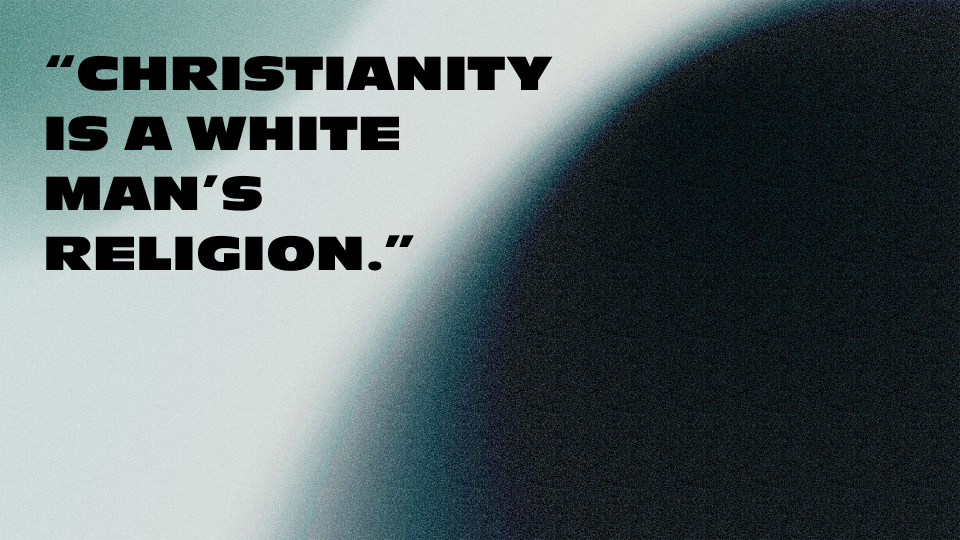By Morgan Cates
With the explosion of the social justice movement, there has been an increasing number of people in the western hemisphere who believe in the misconception that Christianity is the, “white man’s religion.” This is a farce propagated by those who wish to lead current and potential believers away from the faith, and unfortunately many people who genuinely love Christ have fallen victim to this lie over the past few years. Christianity is indeed an exclusive religion, but the idea that it is exclusive on any sort of ethnic basis is inherently unchristian. Typically, people do not begin with the presupposition that Christianity is a white man’s religion, they usually arrive at this conclusion after succumbing to multiple other misconceptions.
This idea usually begins with a historically inaccurate view about the beginning of the New Testament. Partially due to the teachings of Dan Brown and other nonbelievers, a surprising number of people believe that the New Testament was compiled by Roman emperor Constantine at the Council of Nicaea in AD325. This is usually coupled with the idea that the Bible helped promote slavery in the southern United States during the 1700s and 1800s and the western image of a white Jesus. Malcolm X, a Muslim, even propagated the idea that Christianity harmed black people during the civil rights movement of the 1960s. Beliefs like these have often led people to the conclusion that Christianity is a white man’s religion. However, there are several things we can look to both inside and outside the Bible to see that Christianity is not an ethnically centered religion.
For starters, the idea that the Bible was compiled in AD325 is a historical sham. There are manuscript copies of every single book of the Bible predating that date, so it could not have possibly been written then. Historians have discovered commentaries written by early church fathers during the first three centuries that show us that the verses were not altered in the fourth century meeting. There are also recordings directly from the Council of Nicaea which show that those men were not debating what books to use, but they were debating on the doctrines taught in the books that were already accepted into the Biblical canon. Secondly, the belief that the Bible was used to condone slavery in the United States is a misconstruction of what actually happened. The Bible that we currently use is not the same Bible used by slave owners in the 1800s. They created what was known as the, “slave bible,” where they removed over half of the Bible and gave that version to their slaves (This will be discussed more in depth in next week’s article on Does the Bible Condone Slavery). Thirdly, the image of a Jesus with white skin is a mistaken over-contextualization of Christianity. A short Google session will teach anyone that Jesus of Nazareth, the central figure of Christianity, was in fact, not a white man.
In addition to that, we also have multiple examples in the Bible where we see that the gospel is not limited to any particular group, but instead is an open invitation to all. In John 4 Jesus sends His disciples into Sychar, which is a town in Samaria, but He stays back at Jacob’s well which is outside the city. He stayed there at the well just so He could meet a Samaritan woman who was coming to gather water. Jews and Samaritans had strong theological variances that caused serious division between the two. In fact, when Jesus spoke to the woman, she was shocked that He, a Jew, would dare speak to her, a Samaritan (John 4:9). However, Jesus was not fazed by the fact that she was from Samaria, in fact, He likely engaged her in conversation specifically because she was a Samaritan. This was also one of the few times in the New Testament where Jesus plainly revealed His identity, “’I know that Messiah is coming (He who is called Christ)…’ Jesus said to her, ‘I who speak to you am He’” (John 4:25-26). When Jesus was in conversation with Jews about His identity, He almost always spoke in language that was confusing to them. He regularly used complicated parables and metaphorical symbols to inconspicuously hint at who He is. However, we see in John 4 that Jesus plainly tells this woman that He is the Savior that she has heard about her entire life. Racial boundaries played no part in Jesus’s ministry. He took no shame in revealing Himself to her, which is a symbolic representation of what He affirmed later on in Matthew 28:19 before His ascension, “Go therefore and make disciples of all nations, baptizing them in the name of the Father and of the Son and of the Holy Spirit.” The Great Commission was the last thing Jesus said to His disciples before He left to take His place on the throne. This was not the last thing He said because it was of least importance, but instead it was the last thing He said because it was His final command, His final instruction for the men who would go on to found His Church filled with people of all colors, nations, and tribes. We see that represented in global Christianity today. The majority of Christians are actually not white people at all. In fact, Africa has the highest concentration of total Christians compared to every other continent. Justin Peters sums it up like this, “There is no white church. There is no black church. There is no brown, yellow, or red church. There is only Christ’s church; purchased by Christ, built by Christ, headed by Christ, for the glory of Christ.” The gospel is for everyone. Faithful Christians spread the gospel to all people in hopes that God’s people will hear His name and come to Him because we all need a savior. Christianity is not the white man’s religion, it’s the sinful man’s religion.

